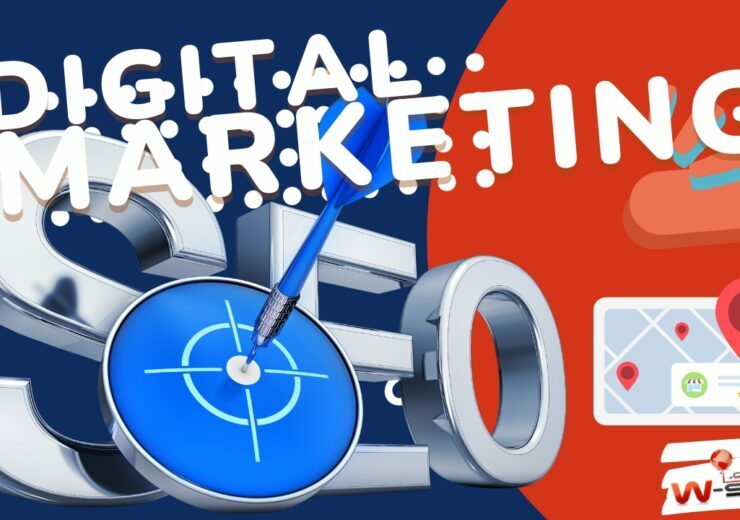How to Create High-Converting Landing Pages: A Professional Guide
Introduction
In today’s competitive digital landscape, landing pages have become indispensable tools for marketers and business owners seeking to maximize their conversion rates. Unlike general website pages that serve multiple purposes, landing pages are strategically designed with a single focused objective: to convert visitors into leads or customers. The importance of these specialized pages cannot be overstated—they serve as the critical bridge between your marketing efforts and your conversion goals, providing a targeted experience that guides users toward taking specific actions. When properly optimized, landing pages can significantly boost your marketing ROI, enhance user experience, and provide valuable data insights that drive continuous improvement.
According to recent industry studies, companies that increase their number of landing pages from 10 to 15 see a 55% increase in leads. Furthermore, landing pages with a clear value proposition can improve conversion rates by as much as 83% compared to generic pages. These statistics underscore why mastering landing page creation is essential for anyone serious about digital marketing success. In this comprehensive guide, we’ll explore six actionable strategies to create high-converting landing pages that deliver measurable results.
1. Define the Goal and Audience of Your Landing Page
Before writing a single word of copy or selecting any visual elements, you must clearly define your landing page’s primary objective and target audience. A landing page without a clear goal is like a ship without a rudder—it may look impressive but won’t reach its intended destination.
Start by establishing a single, specific conversion goal for each landing page. Whether it’s generating leads, selling a product, promoting a webinar, or encouraging app downloads, this objective should guide every element of your page. The more focused your goal, the more effective your page will be at driving conversions.
Equally important is understanding your target audience. Develop detailed buyer personas that include demographic information, pain points, motivations, and objections. What language do they use? What problems are they trying to solve? What might prevent them from converting? This audience insight should inform your messaging, tone, and value proposition.
Actionable Tips:
- Create a conversion goal statement that completes this sentence: “I want [target audience] to [desired action] because [value proposition].”
- Conduct customer interviews or surveys to better understand your audience’s needs and language.
- Analyze your competition to identify gaps in their messaging that you can capitalize on.
- Ensure your landing page aligns with the ad or link that brought visitors there, maintaining message consistency.
2. Craft a Clear and Engaging Headline
Your headline is the first element visitors notice, and it often determines whether they’ll continue engaging with your content. Research shows that 8 out of 10 people will read headline copy, but only 2 out of 10 will read the rest. This makes your headline arguably the most important component of your landing page.
An effective headline should immediately communicate your value proposition while speaking directly to your target audience’s needs or desires. It should be benefit-oriented, concise, and specific. Avoid clever wordplay that might confuse visitors—clarity trumps creativity when it comes to conversion-focused headlines.
Consider using power words that evoke emotion or curiosity, but ensure they remain relevant to your offering. Numbers and statistics can also boost credibility and engagement when appropriately incorporated.
Actionable Tips:
- Place your primary headline in the visible area above the fold where it’s immediately seen.
- Include your main keyword in the headline for both user clarity and SEO benefits.
- Create a secondary headline or subhead that expands on your primary value proposition.
- Test different headline approaches using A/B testing to identify what resonates best with your audience.
- Ensure your headline aligns with the messaging that brought visitors to your page to maintain continuity.
3. Use Persuasive Copy and Visuals
Once your headline captures attention, your body copy and visuals must work together to maintain interest and build a compelling case for conversion. Effective landing page copy is scannable, benefit-focused, and addresses both the rational and emotional drivers of your audience.
Structure your copy to flow logically from problem identification to solution presentation. Use short paragraphs, bullet points, and bold text to improve readability. Focus on benefits rather than features—explain how your offering improves your customers’ situation or solves their problems.
Visual elements should complement and enhance your written content. High-quality images, videos, infographics, and screenshots can communicate complex information more efficiently than text alone. According to recent studies, landing pages with relevant videos can increase conversions by up to 86%.
Actionable Tips:
- Use the inverted pyramid writing style, placing the most important information first.
- Incorporate social proof such as testimonials, case studies, or client logos to build trust.
- Include demonstration videos or product screenshots that show your solution in action.
- Ensure all visuals are high-quality, relevant, and optimized for fast loading times.
- Use directional cues (like arrows or people looking toward your CTA) to guide attention toward conversion elements.
4. Include a Strong Call-to-Action (CTA)
Your call-to-action is the climax of your landing page—the element that transforms interested visitors into conversions. A weak or confusing CTA can undermine even the most beautifully designed landing page, while a strong one can significantly boost your conversion rate.
An effective CTA should be visually prominent, action-oriented, and value-focused. Use action verbs that clearly indicate what will happen when visitors click, and consider incorporating a value proposition that reminds users what they’ll gain by taking action.
The design of your CTA button also plays a crucial role in its effectiveness. Color, size, placement, and whitespace all influence how easily visitors can locate and interact with your CTA. Generally, high-contrast colors that stand out from the rest of the page perform best.
Actionable Tips:
- Use action-oriented text that creates urgency or highlights value (e.g., “Get My Free Ebook” vs. “Submit”).
- Ensure your CTA button is large enough to be easily clickable on both desktop and mobile devices.
- Place CTAs both above the fold and at logical conclusion points throughout your page.
- Test different CTA colors, texts, and placements to optimize performance.
- Reduce friction by keeping forms short and only asking for essential information.
5. Optimize for Speed and Mobile Devices
In an era of shortening attention spans, page loading speed and mobile responsiveness are non-negotiable elements of an effective landing page. Research indicates that 53% of mobile site visits are abandoned if pages take longer than 3 seconds to load, and Google now uses mobile-first indexing, making mobile optimization essential for SEO.
Start by compressing and optimizing all images to reduce file sizes without sacrificing quality. Minimize HTTP requests by combining files and using efficient coding practices. Leverage browser caching and consider using a content delivery network (CDN) to improve loading times for visitors across different geographical locations.
Mobile optimization goes beyond responsive design—it requires thoughtful consideration of the mobile user experience. Buttons should be appropriately sized for touch interaction, forms should be easy to complete on smaller screens, and content should be easily digestible without excessive zooming or horizontal scrolling.
Actionable Tips:
- Use tools like Google PageSpeed Insights to identify and fix speed issues.
- Implement accelerated mobile pages (AMP) for critical conversion pages.
- Adopt a “mobile-first” design approach, ensuring all elements work perfectly on mobile devices.
- Simplify forms for mobile users by reducing fields and using mobile-friendly input types.
- Test your landing page across various devices and browsers to ensure consistent performance.
6. Test and Iterate for Better Performance
Creating a high-converting landing page is not a one-time task but an ongoing process of testing and optimization. What works for one audience or product might not work for another, making continuous experimentation essential for long-term success.
A/B testing (also known as split testing) allows you to compare two versions of a page element to determine which performs better. Start by testing one variable at a time—such as headlines, CTA buttons, images, or form lengths—to gather clear data about what influences conversions.
Beyond A/B testing, consider implementing more advanced optimization strategies like multivariate testing, heatmaps, and session recordings. These tools provide deeper insights into how users interact with your page, revealing potential friction points or engagement patterns that might not be apparent from conversion data alone.
Actionable Tips:
- Develop a hypothesis for each test based on data or user feedback rather than guesses.
- Test significant changes rather than minor tweaks to gather meaningful insights.
- Allow tests to run until they reach statistical significance to ensure reliable results.
- Document your findings to build an institutional knowledge base about what works for your audience.
- Establish a regular testing schedule to maintain continuous improvement momentum.
Conclusion
Landing page optimization represents one of the most impactful opportunities for improving marketing performance and driving business growth. By implementing the strategies outlined in this guide—defining clear goals, crafting compelling headlines, using persuasive content, creating strong CTAs, optimizing for speed and mobile, and embracing continuous testing—you can systematically improve your conversion rates and maximize your marketing ROI.
Remember that creating high-converting landing pages is both an art and a science. While established best practices provide a solid foundation, your specific audience and offerings will ultimately determine what works best. Start with these professional techniques, but let your data guide your ongoing optimization efforts.
The digital landscape continues to evolve, and so should your landing pages. Don’t wait for perfect conditions to begin optimizing—start testing and iterating today. Even small improvements can compound into significant results over time, making landing page optimization one of the most valuable investments you can make in your marketing success.




